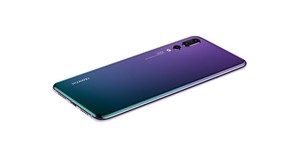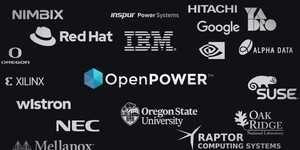Alibaba unveils high-performance XT910 RISC-V chip
July 26, 2019 | 09:39
Companies: #alibaba #chips-alliance #risc-v-foundation #t-head

Pingtouge, known in the west as T-Head and representing one of the semiconductor concerns under Alibaba's DAMO Academy, has announced a 64-bit processor based on the RISC-V instruction set architecture (ISA) - and it's claimed to be the most powerful RISC-V chip yet produced.
Recently formally ratified, the RISC-V instruction set architecture (ISA) aims to differentiate itself from the competition in a number of ways - primarily the fact that it is available under a permissive licence, meaning anyone is free to design, build, and produce chips based on the specification with or without modification and without the need to pay a licensing fee or royalties. It's a concept that has drawn attention from major companies from Google and Nvidia to Western Digital and even Intel, while putting industry incumbents like Arm on the back foot.
Now, Chinese technology giant Alibaba is getting in on the act, via its DAMO Academy and T-Head chip division. The result: CoreXuanTie910, or XT910, a 16-core 2.5GHz processor built on a 12nm process node - claimed to be the most powerful RISC-V processor yet produced.
Based on the RV64GCV instruction set architecture, the XT910 is a superscalar processor core with three decoders and a 12-stage out-of-order-operation pipleline, featuring the ability to load up to eight instructions - including one load and one store instruction - into its execution unit each cycle. Up to four cores can be clustered together, with up to four clusters per chip in the current design for a total of 16 cores and 16 threads (16C16T) per chip. On top of the base ISA, meanwhile, T-Head has also added 50 extended instructions designed to improve performance in arithmetic operations, memory access, and cache and buffer maintenance.
'The breakthrough is more than a mere performance enhancement of RISC-V processors. It means more IoT areas that require high-performance computing such as 5G, AI, networking, gateway, self-driving automobile, and edge server can now be powered by this latest RISC-V processor, which was previously used for simple embedded devices like smart-home appliances,' claims Jianyi Meng, senior director at Alibaba Group and lead developer on XT910. 'We are excited about this new development and the exciting future that it unfolds for the RISC-V community.'
'We are truly fascinated by the important milestone that Alibaba’s RISC-V processor has created,' adds Calista Redmond, chief executive of the RISC-V Foundation. 'We believe many chip developers can benefit from this technology breakthrough, which also helps accelerate the growth of the RISC-V community now that more IoT areas can be explored. I believe the RISC-V community, especially the community in Asia, will be on a much faster growth trajectory in the years ahead.'
Meng has also confirmed that Alibaba plans to release the source code for a simulator and emulator built around its design in September, in part to celebrate T-Head's first birthday - a move that the permissive licence under which the RISC-V ISA is made available does not require, with companies free to release their derivative designs under any licence of their choosing including to keep them entirely proprietary if desired.
'By sharing the simulation and emulation code, we hope to provide global developers with access to the high-performance processor so they can leverage the technology to develop prototypes for their own chips,' claimed Meng, whose company has also announced its membership of the free and open source silicon industry group the CHIPS Alliance. 'As a result, more innovation in IoT and AI fields can be created. That is aligned with Alibaba DAMO Academy’s mission of making technology more inclusive, open and accessible.'
Alibaba has not yet indicated whether it plans to produce the chip commercially or use it wholly internally.

MSI MPG Velox 100R Chassis Review
October 14 2021 | 15:04








Want to comment? Please log in.